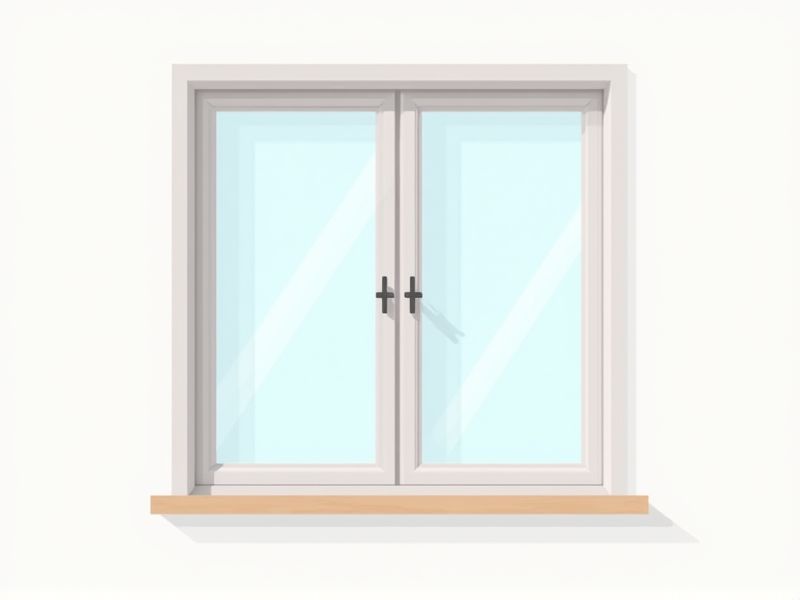
When choosing window frames, understanding standard dimensions can help streamline your planning process. In residential construction, common window frame widths are 24, 36, 48, and 72 inches, while standard heights are typically 36, 48, 60, and 72 inches. These measurements refer to the window's rough opening, which is the space in the wall where the frame will be installed. Always double-check with your window manufacturer's specifications for exact sizing, as slight variations may apply based on style or custom design needs.
Height And Width
The standard dimensions for window frames typically vary by region but generally emphasize a height of 36 to 48 inches and a width of 24 to 60 inches. For custom installations, you might consider frames that are 30 inches high and 36 inches wide, accommodating both aesthetic and functional needs. When selecting your window frame, ensure it fits the structural specifications of your home while also allowing proper ventilation and natural light. Understanding these dimensions is crucial, as they impact energy efficiency, safety, and overall design harmony.
Depth
A window frame depth typically ranges from 3 to 7 inches, significantly impacting insulation and aesthetics. A deeper frame enhances energy efficiency by allowing more space for insulation materials, contributing to lower heating and cooling costs. This added depth can also accommodate decorative trim or custom finishes, improving the overall appearance of your windows. Choosing the right depth for your window frame can result in improved functionality and an elevated visual appeal for your home.
Thickness
The standard thickness for window frames typically ranges from 1.5 to 2.5 inches, depending on the material and design specifications. Vinyl, wood, and aluminum frames each have unique thickness requirements that affect energy efficiency and durability, with vinyl frames often trending towards the thicker end of this range for better insulation. A thicker frame can support larger panes of glass, improving both structural integrity and soundproofing capabilities, while also enhancing overall aesthetic appeal. When selecting a window frame, consider how thickness impacts your home's energy performance and maintenance needs for lasting value.
Sill Height
The standard window frame sill height typically ranges from 24 to 36 inches above the finished floor, ensuring accessibility and aesthetics in residential and commercial buildings. This height allows for optimal natural lighting while maintaining privacy and enhancing the room's visual appeal. In some designs, particularly in homes with small children or pets, lower sill heights may be considered for safety. When planning your window installation, remember that adhering to local building codes may also influence the final sill height selection.
Mullion And Transom Size
The standard size for a window frame mullion typically ranges from 3 to 6 inches in width, providing structural support and visual division between panes. Transoms, which are horizontal structural elements above windows, generally measure between 4 to 12 inches in height, enhancing both aesthetic appeal and functionality. For optimal performance, consider using materials that reduce thermal transfer, such as vinyl or fiberglass, which can significantly improve energy efficiency ratings. Your choice of mullion and transom dimensions can influence natural light entry, thereby affecting the overall ambiance of the interior space.
Window Type (E.G., Casement, Sliding)
The window frame standard is heavily influenced by the type of window, with casement windows typically featuring a hinged design that opens outward, allowing for maximum ventilation. Sliding windows, on the other hand, utilize a track system, providing ease of access and space-saving benefits, particularly in tight areas. Each window type requires specific frame materials, such as vinyl, wood, or aluminum, which affect durability and aesthetic appeal. Understanding these variations can help you make informed choices for both performance and design in your home.
Frame Material
The standard for window frames primarily revolves around the material used, which significantly impacts energy efficiency, durability, and maintenance. Common materials include vinyl, which offers excellent insulation and low maintenance; aluminum, known for strength and a modern aesthetic; and wood, prized for its natural beauty but requiring regular upkeep. Each material features specific thermal performance ratings, with vinyl generally achieving a U-factor as low as 0.18, while wood and aluminum tend to range from 0.25 to 0.35. Selecting the right frame material is crucial for optimizing your home's energy efficiency and aesthetic appeal.
Glazing Thickness
When selecting window frames, the glazing thickness plays a crucial role in energy efficiency and acoustic performance. Standard glazing options typically range from 6mm to 28mm, with thicker glass providing enhanced insulation and noise reduction. You can improve your home's energy rating significantly by using insulated double or triple glazing, where the air space between panes can vary from 12mm to 16mm. Understanding these specifications will help you make informed choices for better thermal performance and reduced energy costs.
Opening Size
The standard opening size for window frames typically ranges between 24 to 36 inches wide and 36 to 72 inches tall, depending on the window style and installation requirements. Ensuring your opening complies with local building codes is essential, as this can affect energy efficiency and safety. For homes, a standard double-hung window often has an opening height of 48 inches, allowing for adequate ventilation. Proper measurement of the opening not only enhances aesthetic appeal but also optimizes the performance of the window, contributing to overall home comfort.
Clearance And Allowance
When assessing window frame standards, it's crucial to consider clearance and allowance dimensions, which typically range from 1/8 inch to 1/4 inch. These measurements ensure proper fitting, preventing issues such as warping or obstructed openings. Clearances aid in accommodating thermal expansion and contraction, ultimately enhancing energy efficiency. Adhering to established guidelines, such as those set by the American Architectural Manufacturers Association (AAMA), guarantees both performance and longevity in window installations.
